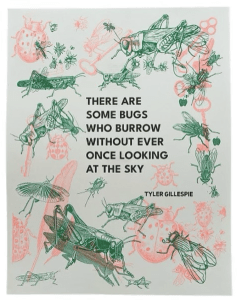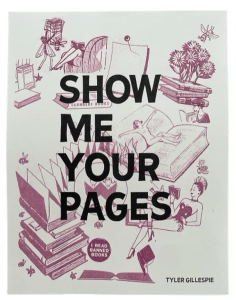After we met at Indie Flea, Kaitlin Crockett and I got coffee at the Black Crow on Central. We talked about Florida and poetry and her experience as a printmaker. Kaitlin collaborated with visual artists throughout the city, and our conversation turned to ways we might help bring more writers into the fold.
I’d been thinking a lot about ways writers could be more visible in visual art spaces. The county’s art markets give visual artists a place — and platform — to sell their work, but I hadn’t seen many writers in these spaces.
A poem isn’t as immediate as a painting. It’s quieter. Internal. It can prove difficult to make the black-and-white page stand out in the colorful art scene.
But that doesn’t mean writers can’t be in these spaces. We just have to find our way into them. Kaitlin helped me see a way to do this, in part, through poetry broadsides.

Ann Holmes at the Library of Congress writes broadsides — or posters — have been around “since the advent of movable type” to help “get information out quickly.” Holmes notes broadsides have often been used as “proclamations” for events like victories but “a number of publishers printed broadsides as a way to highlight poets and their poetry.”
Poetry broadsides are one-sheet prints with a poem or a few lines from a poem. Many of them include some kind of image, but this aspect isn’t necessary.
Kaitlin and I made our first collaborative broadsides (the images in this post) on the risograph printer at her shop Print St. Pete. We chose lines from poetry in my book the nature machine, and she collaged images to complement the words.
We then sold them at readings, art markets, and her shop’s online store.

I’ve since started to make poetry broadsides, prints, and other visual media as part of my creative practice. The visual element has expanded the way I see writing and the potential ways it can circulate in the world. It’s also allowed me to come full circle and showcase my work at Indie Flea, the very place that brought me together with Kaitlin.
We writers may sometimes feel out of place in visual art spaces, but words can be as visual as any other medium. We just need to figure out what that can look like for us.






